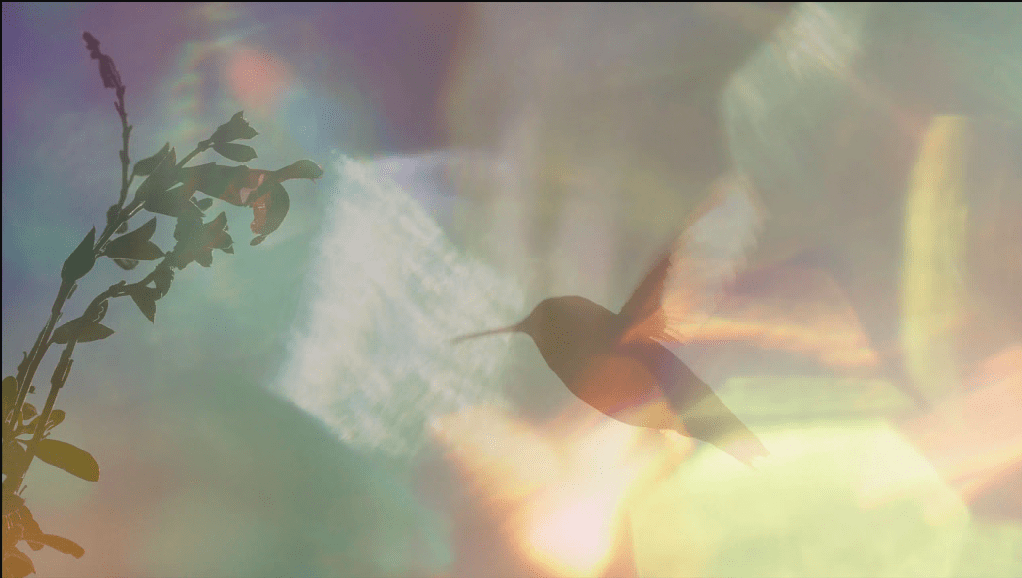
A documentary about rehabilitating hummingbirds proving to be a poignant reflection on life and death might sound unexpected, but it will make perfect sense when you leave Sally Aitken’s Every Little Thing.
Every Little Thing starts pleasantly as it focuses on Terry Masear’s efforts to save injured hummingbirds. We’re shown Masear’s day-to-day, where she must check on the different houses — each used for different stages of hummingbird recovery. We see her take phone call after phone call from “finders” (her term for people who bring in the injured hummingbirds), advising them on their unique situations. One humorous section involves a couple attempting to trap a hummingbird inside a bag, and the fellow speaks of the terror he felt when he finally caught it, and he heard it fall to the bottom of the bag. He thought he killed it. We can laugh at this, because the bird was just fine.
The handheld cinematography of these scenes is juxtaposed by stable, slow motion images of Terry’s flying companions. These slow motion images are a distinct treat, allowing us to see their flawless, inquisitive movement. These creatures, whose wings flutter 50 times a second, and can move their bodies while keeping their heads still, are a marvel to look at. Their motion is so distinct that some of these slow motion images look like stop-motion animation.
For all these simple pleasures, however, loss will soon linger over the film. It’s inferred to come with the territory. However much Terry wants to save every one of these precious beings, she knows she can’t. Beyond the loss associated with her life’s calling, the loss of her partner lingers over the film. When he’s first spoken of, he’s referred to in past tense. You might hope that he’s only referred to in past tense because he’s just no longer in her life, that they had an amicable break-up and he’s living elsewhere. As the film progresses, this hope slowly and surely wanes. His death comes from a natural evolution of language: from being inferred in past tense, to being stated outright.
Terry herself seems to have a more honest view of death and loss than others. After sugarcoating the diagnosis of two hummingbirds to their respective finders, she tells us that finders are always so hopeful, even in hopeless situations, and she can’t bring herself to tell them the full, wretched truth so soon. Terry, however, knows the truth. She knows the likelihoods, and she prepares for the worst.
This doesn’t mean Terry doesn’t hide things from herself. There’s the subtle evolution of the way she speaks about her partner. Perhaps the evolution, from merely referring to him in the past tense to talking about his passing, isn’t a sign of proper acceptance, but itself a sign that she only brings up his death because she has to. She also explicitly states she tries to hide from abuse she suffered as a child, only to realize this hurts her more. There’s also the way she speaks about Cactus, a hummingbird whose namesake comes from the cactus it injured herself on. Cactus was one of the hummingbirds whose fate was Terry sugarcoated. When she sits out on her own at night, she talks about how she thinks Cactus has a 10, maybe 20, percent chance at survival. Grim as that outlook might seem, one might get the sense that Terry could be sugarcoating herself. Is that a genuine estimate, or can Terry just not bring herself to say 0?
Whether or not Terry hides things from herself, whether or not she could be sugarcoating Cactus’ odds, it’s essential to note that, whatever it may be, Terry is a person who puts her money where her mouth is. Even if there is some vague sugarcoating going on, she can translate this into proper hope, and that which she can turn into hope, she’ll do her best to turn into life.
This hope brings about one of the most shocking, yet fitting moments in the film. It’s a moment where a hummingbird flies an inch. No more, no less, than an inch. It does not seem like much, but it can be said, with no hyperbole, that a sold out screening at Sundance applauded at this inch of flight like Tobey Maguire just showed up in Spider-Man: No Way Home. It was a bizarre, yet, wholly cathartic experience. Because what better than a creature that weighs 20 grams, flying an inch, to the applause of an audience, to communicate the value of every little thing?

